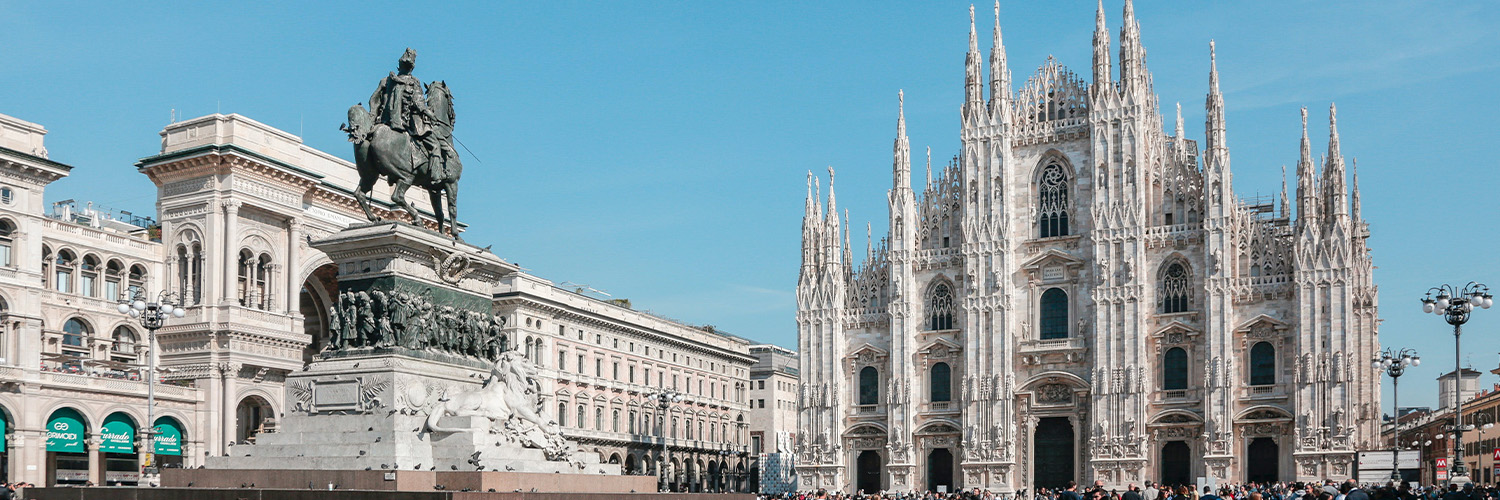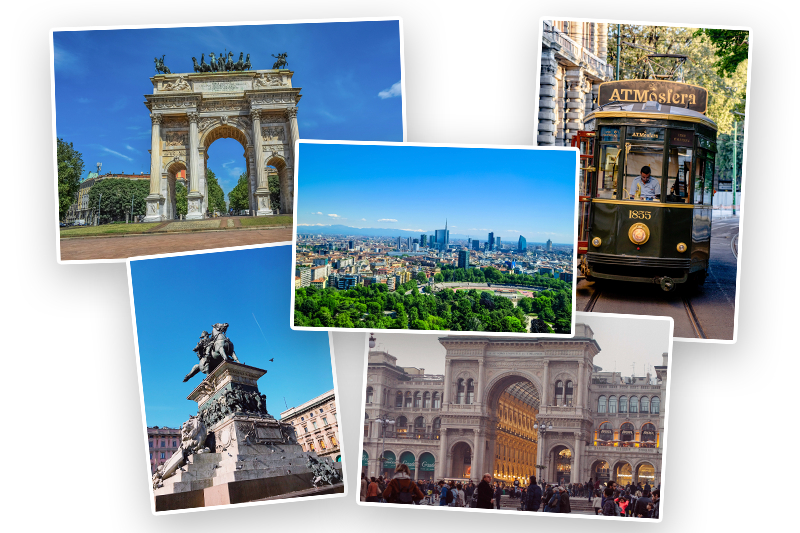
Frequencies and Schedules
Ponta Delgada <> Milan
April, May, and October
On Wednesdays and Fridays
June, July, August and September
On Mondays, Wednesdays and Fridays
About Milan
Milan is a city that combines tradition and modernity, history and innovation, art and business.
The capital of fashion and design, with stores, museums, and galleries that will enchant you, it is an incredible city, full of history, culture, and beauty. Milan is a place worth visiting and exploring, with so much to offer its visitors.

| Population | 1,371,498 (2022) | Country | Italy | Language | Italian |
| Area | 181,76 km2 | Currency | Euro | Time zone | UTC+1 |
Milan is one of Italy's largest and most important cities, the capital of the Lombardy region in the north of the country, and a center for business, finance, fashion, culture, and tourism.
A cosmopolitan and international city with great cultural and ethnic diversity, Milan is also rich in art and culture, with numerous museums, theaters, churches, and monuments that attract millions of visitors every year. Among its main attractions are:
- The Duomo, an imposing Gothic building that took over 500 years to complete. It is the third-largest church in the world with a capacity for 40,000 people. Inside, there are works of art, such as the sarcophagus of St. Charles Borromeo and the oldest organ in Italy. Outside, there are more than 3,000 statues and 135 pinnacles. From its terrace, you can enjoy a panoramic view of the city and the Alps.
- The Last Supper (Cenacolo Vinciano), one of the most famous frescoes in the world, painted by Leonardo da Vinci between 1495 and 1498. It depicts the moment when Jesus announces that one of his disciples will betray him. It is located on the wall of the dining hall of the convent of Santa Maria delle Grazie and is a UNESCO World Heritage Site.
- The Teatro alla Scala (La Scala), one of the most prestigious opera houses in the world, opened in 1778. It has hosted premieres of works by composers such as Verdi, Puccini, and Rossini. It has a capacity for 2,000 spectators and excellent acoustics. Inside, there is also a museum which tells the story of the theater and exhibits objects related to opera.
- The Galleria Vittorio Emanuele II is an elegant shopping center built between 1865 and 1877. It has an iron and glass structure that forms a triumphal arch at the entrance and a dome in the center. It is considered the oldest shopping center in the world and houses luxury stores, cafés, restaurants, and bookstores. On its floor, there are four mosaics representing the symbols of the four main Italian cities: Milan (a bull), Turin (a white bull), Florence (a lily) and Rome (a she-wolf).
- The Sforzesco Castle (Castello Sforzesco), a medieval fortress that was the residence of the Dukes of Milan. It was built in the 15th century by Francesco Sforza and expanded in the following centuries. Today, it houses several museums exhibiting collections of ancient and modern art, such as paintings, sculptures, weapons, musical instruments, and furniture. Among its most notable works are the Pietà Rondanini, Michelangelo's last sculpture, and the Sala delle Asse, decorated by Leonardo da Vinci.
- The Sempione Park (Parco Sempione), a large green space extending over 38 hectares behind the Sforzesco Castle. It was created at the end of the 19th century as a public garden with an English landscape style. Inside, there are many monuments and buildings, such as the Arch of Peace, the Palace of Art, the White Tower, and the Civic Aquarium.
- The fashion quadrangle (Quadrilatero della Moda), an area made up of four streets that concentrate the stores of the world's leading fashion brands, such as Armani, Versace, Prada, Dolce & Gabbana, and Gucci. The streets are Via Montenapoleone, Via della Spiga, Via Sant'Andrea and Via Manzoni. It's an ideal place for shopping or simply admiring the displays and shows that take place during Milan Fashion Week.
Milan is also a city that offers many leisure and entertainment options, with a lively nightlife and a varied cuisine. Typical dishes include risotto alla milanese (rice with saffron and cheese), cotoletta alla milanese (breaded veal steak), ossobuco (veal with marrow) and panettone (candied fruit cake). Typical drinks include campari (a bitter apéritif) and spritz (white wine with soda water and orange).
